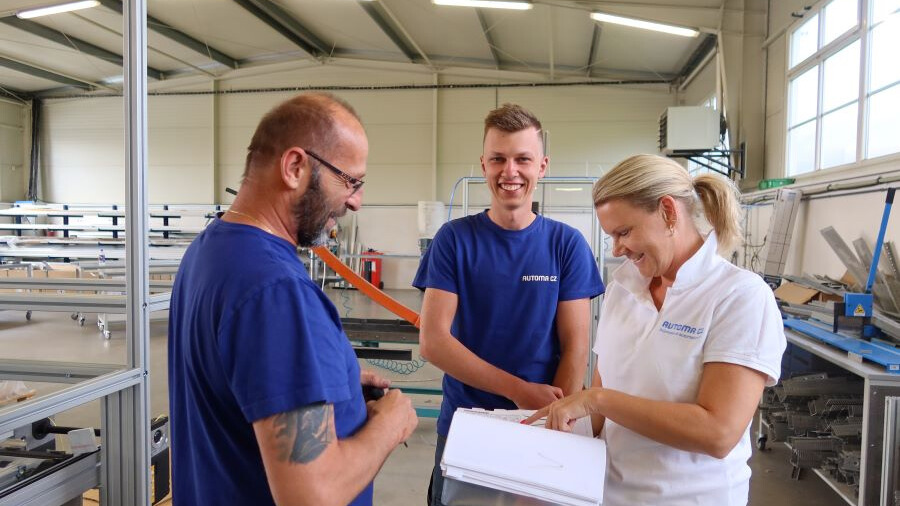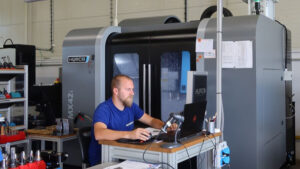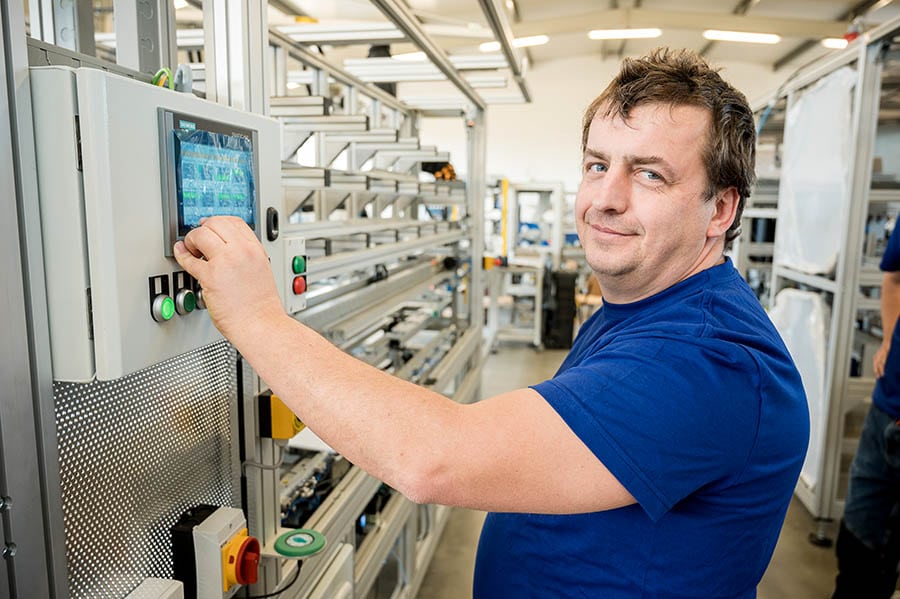Every manufacturing process step generates valuable data, from machine performance metrics to product quality measurements. Leveraging this data gives manufacturers a data-driven advantage, allowing them to make decisions based on relevant and actionable information.
Gone are the days of relying on feeling good
Assembly line data collected and analyzed by AI provides evidence-based insights for managers. Every step, from resource allocation to maintenance planning, is backed by robust data analytics, reducing error rates and increasing long-term profitability.
In the era of Industry 4.0, integrating assembly line data collection and artificial intelligence is more than just an upgrade - it's a revolution. Manufacturers who embrace this transformational synergy will be at the forefront of innovation and pave the way to a smarter, more efficient, and competitive future.
Data collection from assembly lines
Modern assembly lines are equipped with RFID sensors and IT devices that collect data on every step of the production process in the assembly line. This data can include production speed, energy consumption, temperatures, pressures, cycle times, number of defective parts, and many other parameters. This data can be collected in real-time, allowing quick responses to potential problems and bottlenecks in the production process.
The exact procedure for collecting data from assembly lines can be specific and depends on the system and equipment used in production.
- Installing RFID sensors and devices: first, it is necessary to establish the sensors and devices on the assembly lines to collect the data. The sensors can measure movement speed, temperature, pressure, material flow, number of completed operations, etc. These sensors are placed strategically on the assembly line to monitor critical aspects of the production process.
- Data collection: sensors continuously measure and record data about the production process. This information is then stored in a central location on servers or in the cloud, where it is available for further analysis and evaluation.
- Data transmission: data can be transmitted in various ways, including wireless or wired connections. Data must be transmitted reliably and securely to a central location.
- Data analysis: the collected data is then analyzed using sophisticated algorithms and artificial intelligence. This analysis reveals patterns, identifies outliers, performs statistical calculations, and finds relationships between different parameters. The result is a comprehensive set of information about the production process.
- Data visualization: Data is processed into an understandable form and presented through visualizations, graphs, tables, or dashboards. This allows operators and managers to monitor the real-time production process and detect anomalies easily.
Using data for artificial intelligence (AI):
Data from assembly lines has enormous potential for the use of artificial intelligence. Thanks to AI algorithms and machine learning, data can be analyzed and used to uncover patterns, optimize processes, and identify hidden connections. Artificial intelligence can help predict errors and failures, enabling problem prevention and reducing the risk of unplanned production downtime. Further, AI can remember the most efficient settings in the manufacturing process, increasing productivity and saving costs.
Benefits of using data and AI in assembly lines
Predictive maintenance: By analyzing data from assembly lines, AI can predict potential failures and problems in production equipment. This allows preventive maintenance to be carried out, reducing the risk of unplanned production downtime and extending machine life.
Manufacturing process optimization: Artificial intelligence can analyze data and identify optimal settings and procedures in the manufacturing process. This leads to higher productivity, lower costs, and improved product quality.
Quality and control: Data from assembly lines enables real-time monitoring and quality control. Artificial intelligence can quickly react to deviations and errors in the production process, minimizing defective parts and reducing losses.
Flexibility and adaptability: Artificial intelligence enables rapid change and adaptation of the production process in response to changing requirements and market conditions.
Overall, using assembly line data collection and analysis using artificial intelligence represents an innovative and promising direction in the industrial environment. This modern approach strengthens competitiveness and enables manufacturing companies to achieve higher efficiency, quality, and innovation levels in their production processes.
Benefits for Automa CZ customers
- Increased production efficiency: A system using data acquisition and artificial intelligence optimizes the production process. By analyzing data and identifying the most efficient processes, the productivity of assembly lines is increased, leading to shorter production times and increased overall efficiency.
- Cost reduction: predictive maintenance and optimized production processes can minimize the risk of unplanned production downtime and reduce repair and maintenance costs. More efficient production also brings savings in energy and material consumption.
- Increase product quality: The system allows real-time quality monitoring and rapid detection of deviations or errors. This minimizes the number of defective units and increases the quality of products delivered to customers.
- Flexibility and adaptability: thanks to the ability of AI to react quickly to changes and new requirements, customers can easily adapt the production process to unique production needs and respond rapidly to market changes.
- Competitive Advantage: Customers gain a competitive advantage by using advanced technology and automation in production. Better and more efficient production allows them to offer their products at competitive prices and with higher quality standards.
- Improved operational reliability: With predictive maintenance and reduced production errors, customers can rely on their assembly lines' excellent operational reliability. This allows them to reduce the risk of unplanned production stops and maintain continuous production.
Overall, customers to whom Automa CZ supplies assembly lines equipped with an innovative system using data acquisition and artificial intelligence gain many advantages that significantly strengthen their production processes and competitive position in the market. They increase their efficiency, reduce costs and improve product quality, all of which contribute to their business's long-term success and growth.





